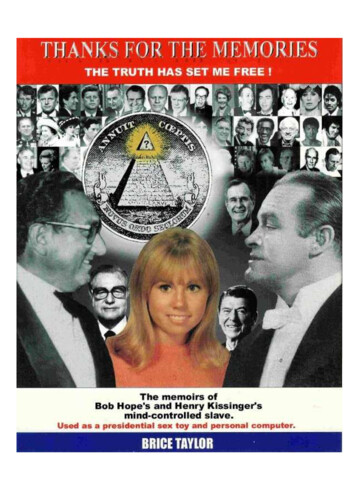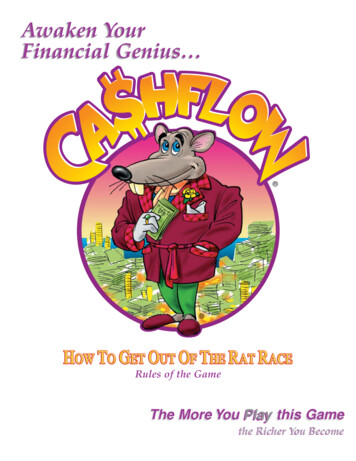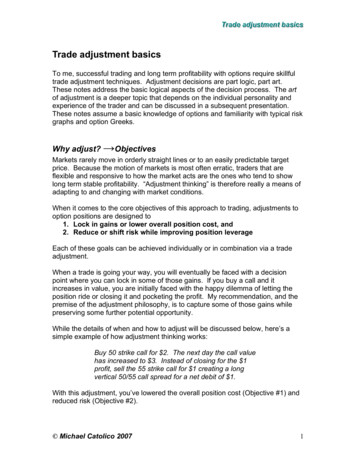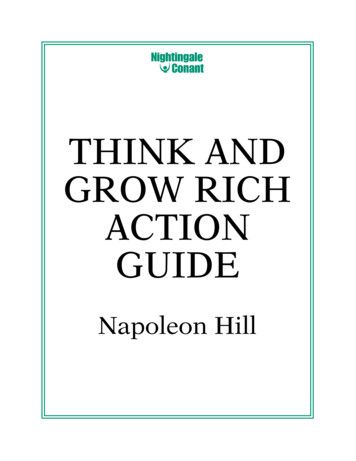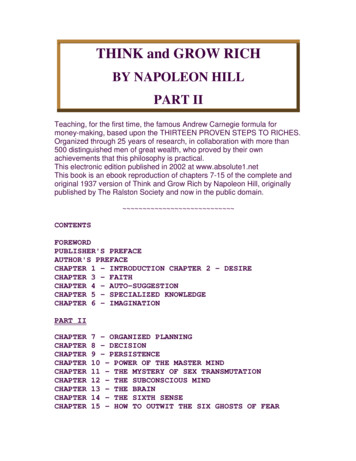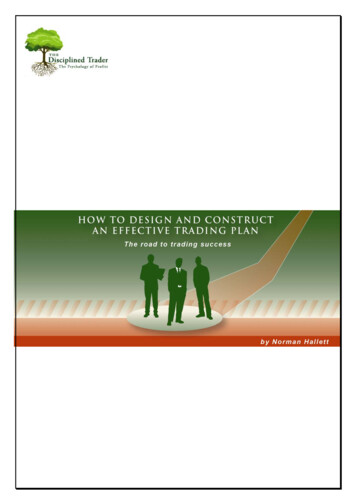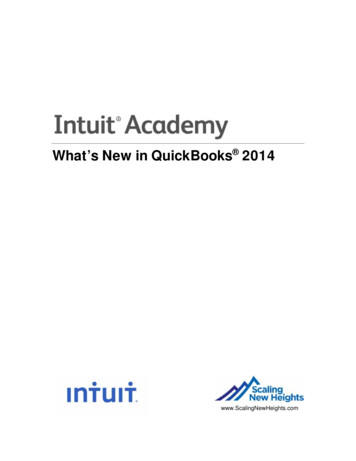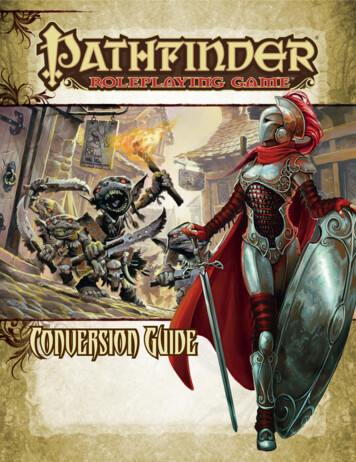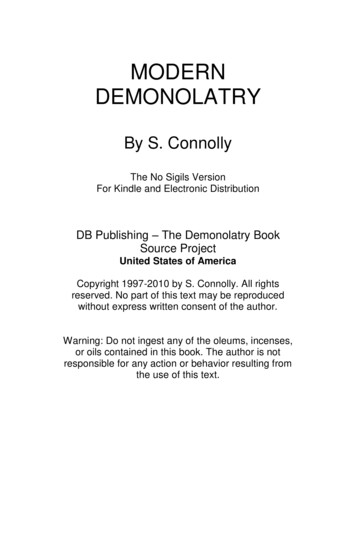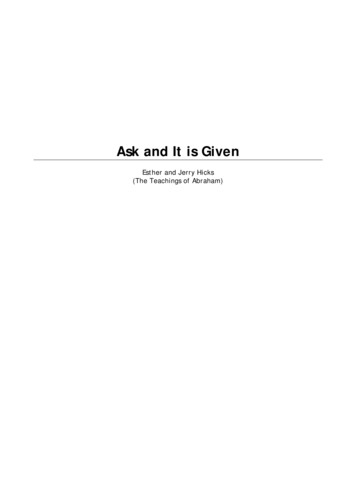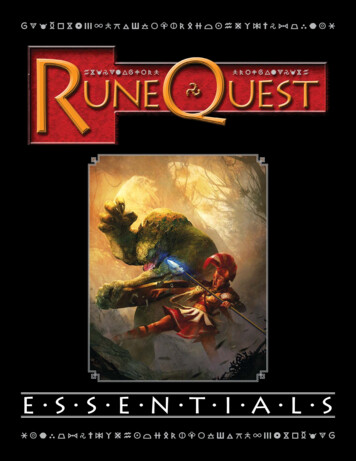
Transcription
abcdefghijklmnopqrstuvwxyz12345678e s s e n t i a l s87654321zyxwvutsrqponmlkjihgfedcba
21zyxwvutsrqponmlkjihgfedcbaessentialsPete Nash & Lawrence WhitakerRuneQuest is a trademark of Moon Design Publications LLC. Used under License by The Design Mechanism. Allrights reserved. This edition of RuneQuest is copyright 2014. This PDF is offered free of charge. It may be sharedfreely between players, friends and gaming groups, but is not intended to be hosted any website save those authorisedby The Design Mechanism and Moon Design Publications LLC.Individuals are extended permission to print, or have printed, any part of this PDF for personal use but are forbiddento offer any print version made for sale or personal/commercial profit.This PDF contains NO Open Game ContentFor details of the RuneQuest Gateway license, please contact The Design Mechanism(designmechanism@gmail.com).
yxwvutsrqponmlkjihgfedcbaDeveloped and Written ByPete Nash and Lawrence WhitakerBased on material originally created bySteve Perrin, Ray Turney, Warren James and Steve HendersonEditingLisa TylerProof ReadingBen Monroe and Lisa TylerDesign and LayoutFred Hicks and Lawrence WhitakerArtistsSarah Evans, Dan MacKinnon, Pascal Quidalt, Lee SmithSpecial ThanksJohn Hutchinson, Rick Meints, Steve Perrin, Jeff Richard and Greg StaffordThe Heroes of Meeros who backed the Indiegogo campaign of July/August 2013.Additional ThanksSimon Bray, Bruce Mason, Filip StojakAll the members of, and contributors to, The Design Mechanism forumsPlaytestersSteven Alban, Nathan Baron, David Paul Bass, Mark Burr, Ben Cable, James Carrington, Chris Donnelly, Colin Driver, Tim Eldred,Tim Evans, Elena Tomàs Ferré, David Finch, Chris Furness, Chris Garland, Chris Gilmore, Tom Griffith, Mark Hare, Kevin Hicks,John Hutchinson, Sebastian Jansson, Donnel Johnson, Joshua Kitz, Marcus Knapp, Dan Lee, Emma Lee, James Lodge, Adam Lundgren,Jordi Mateu Martínez, Bruce Mason, Aiden McAneny, Brad Milburn, John Milward, Daniel J Mooney, Chris Morrell, Alex Morris, Blain Neufeld,Eric Oates, Michael Parkin, Peeter Piegaze, Christopher Pinder, Ben Quant, Warren Ricker, Graham Robinson, Sebastian Sandman, Peter Schofield,Nick Southwick, Howard Tytherleigh, Jordi Romà Vega, Silvia Romà Vega, Ioan Wigmore, Erik Willis, Brian Wombwell, Russ Zabel
zyxwvutsrqponmlkjihgfedcbaCharacteristics and Attributes5Culture & Careers15Skills25Money & Equipment47Game Mechanics59Combat77Magic107Folk Magic117Theism129Creatures147Index195About RuneQuest EssentialsThis edition of RuneQuest is a heavily edited and pared-down version of the full rulebook. Although the coreof the system is intact, this Essentials Edition is intended to be a sampler for the main rules and, hopefully, encourage players and Games Masters to invest in the full game. For example, we have only included two of the fivemagic systems; we have also left out the extensive chapter concerning cults and brotherhoods, and have providedonly a fraction of the creatures. Nevertheless, there is enough here to get started and, indeed, enjoy many hoursof adventure. At some stage though, you will, we hope, want more, and be curious and eager enough to buy theRuneQuest 6th Edition core rules so that you can take advantage of the complete system in all its glory.See page 201 for a list of the many extras to be found in the full RuneQuest rules.
4 RuneQuest Contents
chapter 1:Characteristicsand AttributesThis chapter outlines the initial stepsfor Character Creation. The following chapters provide additionaldetail, but the essentials are found here.Every player in RuneQuest controls acharacter. A character is the player’s alter-ego,his role in the game, and is usually very different, physically and mentally, to the player.RuneQuest characters can be from a varietyof races – although the Essentials rules onlycover the creation of humans.The basic character is defined by a seriesof different elements that describe the character’s capabilities. These elements are:҉҉Characteristics: such as Strength orCharisma҉҉Attributes: things like Height orMovement҉҉Standard Skills: expertise in fundamental abilities which everyone sharesMost of these elements are described interms of numbers, and some are dependenton or calculated by others. What each element means, and how they are determined, isdescribed in the following sections.Beginning toDesign YourCharacterCharacters are usually recorded on a character sheet, which is a handy way of organizing all the information about the character.A blank character sheet is included on pages192-193, but it is recommended that you firstdesign your character using scratch paper,and then transfer the information to a character sheet once you have gone through eachstep of the character creation process. Workthrough each element one step at a timebefore proceeding to the next. Use a penciland have an eraser handy; certain numberssuch as skill values will change several timesduring the character creation process.jRounding ofNumbers andResultsOn some occasionsyou will be required todivide numbers - typically the rating in a skill(such as for determining a critical success,which is 1/10th of theskill's value). Whenevera division result creates a fraction, alwaysround up to the wholenumber. So, for instance,1/10th of 64% is 6.4;this is rounded up to 7.Character ConceptA good place to start is to have some ideaof what sort of character you want to play; ahardened warrior for example, or a cunningthief. Your character concept does not needj5j
jThe Saga ofZamothisThe image below showsa youthful hero, by thename of Zamothis.Throughout these ruleswe’ll be using him asan example of howto create a character and, through hisexploits, show how theRuneQuest rules work.Zamothis' saga beginshere, with charactercreation. His player, hasalready decided that shewants to fashion a grim,stoic warrior, since theRuneQuest campaignwill be set in a fantasyworld based upon mythsof ancient Greece, mixedwith elements of oldschool Sword & Sorcery.Although he may looktough and competentin his illustration,Zamothis does not startout that way. Let usreturn to the main textto see how his physicaland mental characteristics are createdand the skills he learnsduring his early life.RuneQuest j chapter 1: Characteristics and Attributesto be elaborate at this stage; simply an ideathat will help guide certain choices such asrace and profession. A few character ideas arelisted to provoke your imagination.҉҉Fierce barbarian hunter҉҉Young, naïve wizard҉҉Bad-tempered gemstone miner҉҉Chivalrous, yet disgraced champion҉҉Overly-curious explorer-scholar҉҉Unscrupulous mercenaryCharacteristicsEvery sapient creature, be it human, elderrace or monster, is defined by seven characteristics. Each characteristic tells you something about your character; how strong or fasthe or she is; how clever or healthy. Characteristics are at the core of every RuneQuestcharacter and form the basis for most of theother elements such as Attributes and Skills.No matter how alien or strange the race orspecies, the seven characteristics are:҉҉Strength (STR)҉҉Constitution (CON)҉҉Size (SIZ)҉҉Dexterity (DEX)҉҉Intelligence (INT)҉҉Power (POW)҉҉Charisma (CHA)Before calculating the characteristics,the following section explains what eachrepresents.Strength (STR)STR represents physical strength: howmuch one can lift, how hard one can hit, andso on. Characters with a high STR are likelyto be more heavily muscled whilst those witha low STR are somewhat on the scrawny side.STR is a component of the Damage Modifier(see page 9). If a character is reduced to zeroSTR he lacks the ability to move or lift objects,becoming bedridden until STR improvessomehow (through natural healing or magic,for example).Constitution (CON)CON is measure of health and hardiness.Those with a high CON are physically toughand likely to be more resistant to disease orpoison. Those with a low CON are less resilient and may be prone to sickness and tirequickly. CON is a component in determiningHit Points (see page 10) and Healing Rate (seepage 9). If CON falls to zero for any reason thecharacter dies.Size (SIZ)j6jSIZ measures mass, and helps indicateheight and weight. The larger the SIZ theheavier or bigger the creature is likely to be.Most creatures’ SIZ has a higher minimumvalue than other characteristics, representingthe smallest example of an adult of that race;which in the case of humans is 8. SIZ is used tohelp figure Hit Points (see page 10), as larger,heavier creatures tend to have greater endurance against damage. SIZ can also be usedto determine a character’s Damage Modifier,
RuneQuest j chapter 1: Characteristics and Attributessince mass helps to increase the force of ablow. SIZ provides rough limits to Height andWeight, depending on the character’s bodyframe (see page 10). If SIZ drops below thespecies minimum they are considered to havewasted away to the point they are bedridden.Dexterity (DEX)Agility, balance and reflexes are measuredby DEX. Characters with high DEX are fast,nimble and graceful of movement. Those witha low DEX tend to be lumbering and clumsy.DEX is an important aspect of Action Points(see page 8) and Strike Rank (see page 11). Ifa character is reduced to zero DEX they sufferfunctional paralysis, unable to move until thesituation is rectified.Intelligence (INT)INT is measurement of cognitive ability. Itindicates the capacity for a character to thinkboth logically and creatively. Those with alower INT score are not necessarily stupid,but they are likely to be constrained in howcreatively they can employ their wits. Creatures with an INT of 7 or below are considered sentient, retaining animal level instinctand able to react to stimuli. Individuals withan INT of 8 or higher are deemed fully sapient. INT is a factor in calculating ActionPoints (see page 8) and Strike Rank (see page11). If INT is reduced to zero the characterbecomes completely mindless. Power (POW) Power is a measurement of a character’ssoul, spirit, inner drive and capacity formagic. It encompasses a number of differentthings and is a relatively abstract measurement, but is also one of the most important.POW is the characteristic that marks a character out to the gods or other supernaturalpowers and is an indication of divine or magical potential, as well as being an indicationof the force of their personal determination.POW governs a character’s Magic Points (seepage 11) and Luck Points (see page 11). If acharacter’s POW ever drops to zero they loseall independent will.Charisma (CHA)Charisma measures personality and isindependent of physical appearance. Someonewith a high CHA for example might be uglyor plain to look at, but blessed with a charmand wit that more than compensate for notbeing handsome. Likewise a low CHA mightindicate someone who is radiantly beautifulbut utterly shallow or simply meek. A goodCHA is often useful for those who wish to beleaders or centres of their local community.Diehard loners and submissive followers tendtowards the other extreme. CHA affects acharacter’s Experience Modifier (see page 9).If CHA ever falls to zero, the character can nolonger socially interact with others, becomingso painfully shy or antisocial they are ignoredor even driven away.CalculatingCharacteristicsEach characteristic has a numerical valueto determine how potent it is. Characteristic values can be calculated in one of severalways, either by random dice rolls or by allocating a predetermined number of points.Which method should be used is governed bythe Games Master.Games Masters are free to modify rollingtechniques or values to suit their own campaigns. For instance if the Games Masterwished randomly rolled player characters tobe more heroic, or at least free from handicap, he could permit the re-roll of an unusually low result; or allow the player to take upto three points from one characteristic andassign them to another providing the newscores do not exceed the normal characteristic range; or even permit one of the dice usedto roll each characteristic to be substitutedfor its full value. Likewise if using point allocation, a character can simply be assigned alarger pool of characteristic points.By default, the options listed overleaf aresuggested.jNon-HumanSpeciesWhilst humans are thedefault characters toplay in the Essentialsrules, they are not theonly species which canbe used as player characters in RuneQuest.It is possible to play justabout any sapient raceor species described inthe RuneQuest 6thEdition rulebook, suchas Minotaurs, SerpentPeople or even thetraditional Halfling.This is possible becauseall creatures, regardless of type, are definedin the same way.Many RuneQuestsettings offer furthercreature options to useas Player Charactersand guidance is offeredon how to integratethem into a campaign.j7j
jThe Saga ofZamothisThe player, Emma,prepares to createZamothis, a humanadventurer. As thecampaign uses the DiceRoll in Order method,she rolls five sets of3d6, followed by twosets of 2d6 6, placingthem into the characteristics as ordered.Emma rolls the followingon 3d6: 11, 8, 11, 5 and13. A rather discouraging set of numbers.However, as humanscalculate their SIZ andINT using different dice,she then rolls 2d6 6twice and gets a 15 and16, redressing the earlierrolls. Since the diceresults must be placedin order of their roll theyare assigned thusly:STR 11, CON 8,SIZ 15, DEX 11,INT 16, POW 5, CHA 13For a human, Zamothisis of average strength,susceptible to illness, butbig, granting him a tall,lean build. His reflexesare nothing special.However, Zamothis isquick witted, althoughprone to lassitude andprocrastination. Finally,his natural charmand open personalitymake him well-liked.j8jRuneQuest j chapter 1: Characteristics and AttributesDice Roll, In OrderRoll the indicated dice
Individuals are extended permission to print, or have printed, any part of this PDF for personal use but are forbidden to offer any print version made for sale or personal/commercial profit. This PDF contains NO Open Game Content For details of the RuneQuest Gateway license, please contact The Design Mechanism (designmechanism@gmail.com). RuneQ 2 uesT essentials. Credits Developed and

